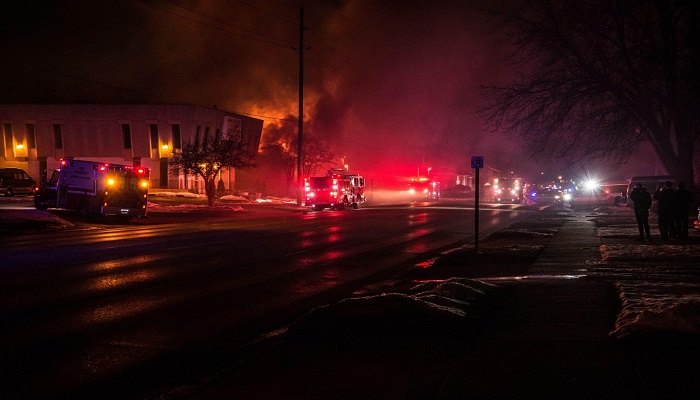Homeowners need a basic understanding of electrical systems to identify potential hazards and take preventative measures.
Electrical fires can be a real danger. Therefore, having common electrical knowledge that prevents fire hazards is a must. For instance, identifying signs of electrical issues such as frayed cords, exposed wiring, and overloaded outlets are the first step to preventing a fire.
In addition, understanding the correct wiring configurations maximum wattage, voltage ratings, and the proper use of circuit breakers will ensure that your electrical system is running safely and efficiently.
We will explore this all in this article. Continue reading.
1. Use Adequate Wire in the Circuit Breaker
Any electrical system’s safe and efficient operation begins with correctly selecting and installing the adequate wire size. In any circuit, the wire size must carry the current load without overloading the breaker.
For example, if you use a 40 amp wire size breaker in your home, it is critical to employ the proper wiring arrangement to ensure safety.
The circuit will be susceptible to fire problems if you install any inadequate size of wiring for it. This is especially important for circuits carrying heavy loads, such as in a workshop or garage.
Small wires usually create a higher resistance in the circuit, resulting in a loss of power, overheating, and potential fire hazards. Conversely, oversized cables cause a voltage drop, resulting in poor electrical system performance.
Furthermore, when sizing wire for a circuit breaker, it is recommended to use the National Electrical Code (NEC), which specifies the minimum wire size for different circuits. The NEC also defines additional information, such as the insulation needed for the wire and the maximum amperage capacity.
2. Keep the Wire Systems Safe
The safety of wire systems is of utmost importance, as potential fire hazards can be catastrophic.
Therefore, routine inspections of wire systems should be conducted to ensure they are up-to-date and functioning correctly.
These inspections should include visual inspections of the wire and its components and testing their functionality.
Additionally, all cables should be labeled appropriately, and wires should be bundled and secured to reduce the risk of overheating. All cables should also be checked for signs of damage and replaced as soon as possible.
Last but not least, each wire system needs its circuit breaker to guard against overload. These precautions will help even electricity distribution and ensure that wire systems are safe and potential fire hazards are minimized or avoided.
3. Unplug All Your Unused Appliances
Another common electrical knowledge that prevents fire hazards is unplugging all unused appliances from the electrical outlets.
Microwaves, toasters, coffee makers, and other appliances can produce heat, frequently after long periods of inactivity. This heat can overheat cables and other components, increasing fire risk.
Therefore, it is necessary to keep them entirely out of the touch of any electricity.
In addition, appliances should be regularly inspected for damage, such as frayed cords or melted plastics, which can also be a source of fire hazards.
4. Give the Electric Appliances Proper Space for Air Circulation
If you don’t give your electric appliances adequate space for air circulation, they could overheat, causing potential fire hazards. The high summer temperatures and constant use of air conditioners make this especially true.
However, you can do a few things to ensure your appliances receive the right airflow.
- First, ensure plenty of space between the appliance and nearby objects that could block airflow.
- Second, keep furniture away from the appliance so there’s room for air to flow around it.
- Finally, keep vents and other openings free from obstructions for unrestricted airflow around the appliance.
Providing adequate space for air circulation around your electric appliances is crucial for safety and efficiency reasons. It helps prevent overheating, improves their performance, and makes them easier to inspect should something go wrong.
5. Check for the Use of Correct Wattage in the Fixtures and Appliances
One way to prevent potential fire hazards is to check the wattage rating of your fixtures and appliances.
Using the wrong wattage can lead to overheating, which can spark a fire. This is why it is crucial to use bulbs and parts with the recommended wattages.
Not only will this reduce your risk of fire, but it could also save you money in the long run.
When using higher wattages than necessary, more energy is used than necessary, and bills will be higher as a result. Also, with lower wattages than required, there may need more power to light up the bulb or appliance properly.
Both scenarios can be avoided by simply double-checking that you have the correct wattage before installing any new parts or bulbs.
Additionally, ensuring that your fixtures and appliances are powered at the proper wattage can increase their lifespan.
By ensuring they are running at their optimal level, they will be less likely to malfunction or break down early due to an overload of power.
Therefore, make sure you are using the correct wattage for each device.
However, many people fail to check for the correct wattage when replacing bulbs or other components.
So, if you are unsure, consult an electrician or the product manufacturer.
6. Inspect Cords, Outlets, and Plugs Safety
Electrical safety is crucial since it may guard against harm to people’s property, accidents, and even fatalities.
Inspecting for frayed, cracked, or worn cords, broken plugs, and overloaded outlets or circuits is an essential step in the prevention plan.
Every outlet in the house or place of business needs to be routinely inspected to ensure it is grounded properly and in good operating order. Adequate outlets and circuits should be provided to prevent overloading.
Inspections should also include examining any extension cords to ensure they are rated for the load being used.
Taking the time to inspect cords, outlets, and plugs can be the difference between a safe and unsafe environment. So, it is a crucial common electrical knowledge that prevents potential fire hazards.
7. Install A Good Quality Smoke Detector
Installing a good quality smoke detector is a necessary safety precaution that should be considered.
Smoke detectors can detect smoke and alert homeowners to a potential fire hazard. However, be sure to check on them periodically and have their batteries replaced at least once a year.
It is also vital to ensure that smoke detectors are installed in the right places within the home. Ideally, they should be located in the hallway outside each bedroom and on every floor, including the basement.
Additionally, interconnect the smoke detectors so that an alarm is triggered if one detects smoke.
By installing and maintaining quality smoke detectors, homeowners can help protect their families and properties from the potential danger of a fire.
Conclusion
Having a basic understanding and common electrical knowledge that prevents fire hazards is the best way to protect yourself and your home from fires.
In this blog post, we have discussed seven vital tips that everyone should consider to ensure they are safe from fire dangers.
So, try to follow those, and in addition, check outlets, extension cords, and other electrical equipment, and inspect them regularly for signs of wear and tear.
Lastly, hire a professional electrician to install wiring and appliances, and always use certified and tested products.





































